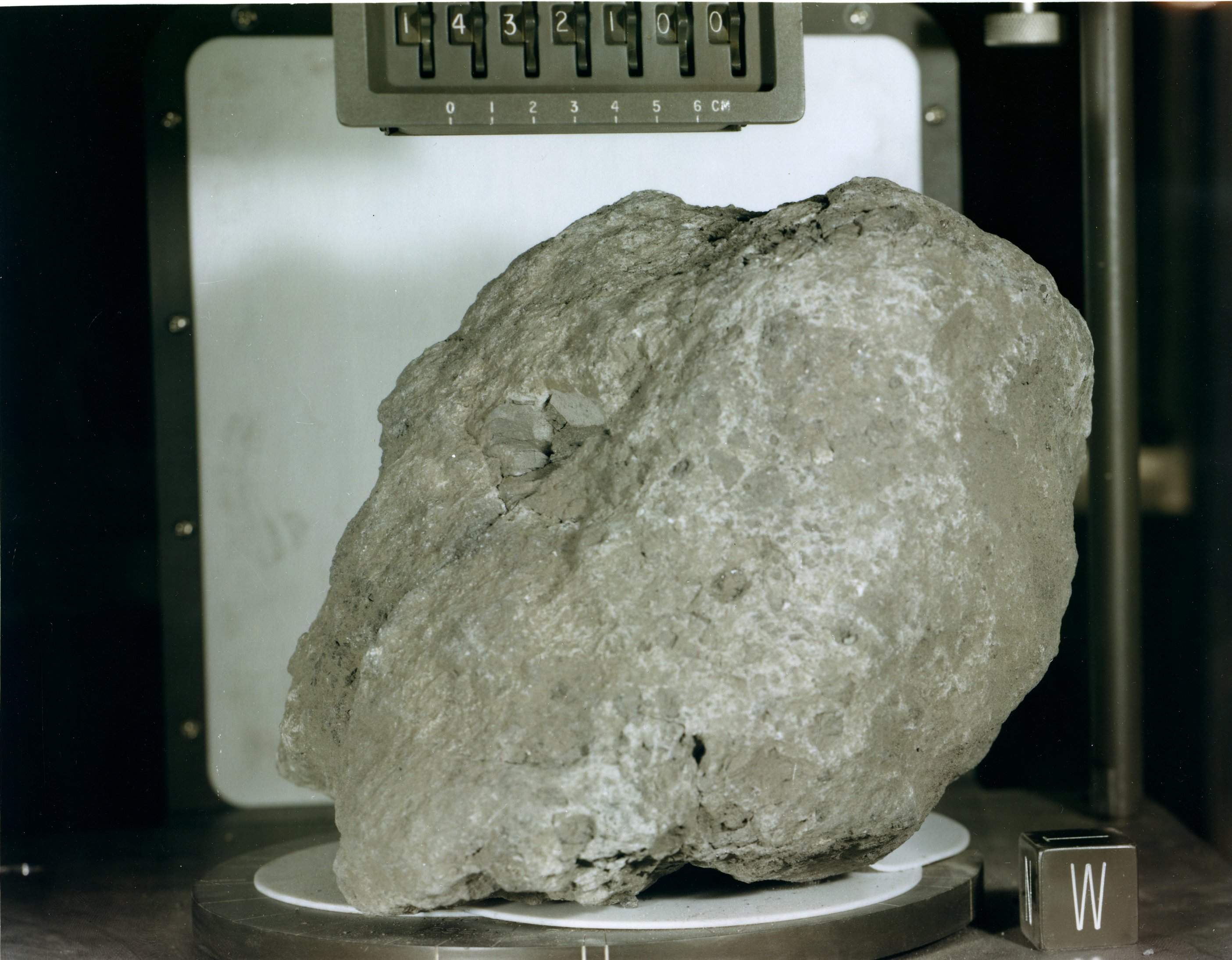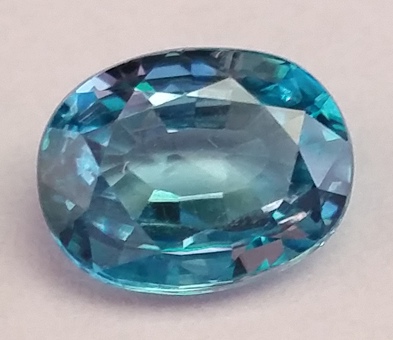|
Oldest Dated Rocks
The oldest dated rocks formed on Earth, as an aggregate of minerals that have not been subsequently broken down by erosion or melted, are more than 4 billion years old, formed during the Hadean Eon of Earth's geological history. Meteorites that were formed in other planetary systems can pre-date Earth. Particles from the Murchison meteorite were dated in January 2020 to be 7 billion years old. Hadean rocks are exposed on Earth's surface in very few places, such as in the geologic shields of Canada, Australia, and Africa. The ages of these felsic rocks are generally between 2.5 and 3.8 billion years. The approximate ages have a margin of error of millions of years. In 1999, the oldest known rock on Earth was dated to 4.031 ±0.003 billion years, and is part of the Acasta Gneiss of the Slave craton in northwestern Canada. Researchers at McGill University found a rock with a very old model age for extraction from the mantle (3.8 to 4.28 billion years ago) in the Nuvvuagittuq gr ... [...More Info...] [...Related Items...] OR: [Wikipedia] [Google] [Baidu] |
Alan Shepard
Alan Bartlett Shepard Jr. (November 18, 1923 – July 21, 1998) was an American astronaut, naval aviator, test pilot, and businessman. In 1961, he became the second person and the first American to travel into space and, in 1971, he became the fifth and oldest person to walk on the Moon at age 47. A graduate of the United States Naval Academy at Annapolis, Shepard saw action with the surface navy during World War II. He became a naval aviator in 1946, and a test pilot in 1950. He was selected as one of the original NASA Mercury Seven astronauts in 1959, and in May 1961 he made the first crewed Project Mercury flight, Mercury-Redstone 3, in a spacecraft he named ''Freedom 7''. His craft entered space, but was not capable of achieving orbit. He became the second person, and the first American, to travel into space, and the first space traveler to manually control the orientation of his craft. In the final stages of Project Mercury, Shepard was scheduled to pilot the Mercur ... [...More Info...] [...Related Items...] OR: [Wikipedia] [Google] [Baidu] |
Big Bertha (lunar Sample)
Lunar Sample 14321, better known as "Big Bertha", is a lunar sample containing an embedded Earth-origin meteorite collected on the 1971 Apollo 14 mission. It was found in the Fra Mauro region of the Moon. Big Bertha is the first discovered meteorite from Earth, and the embedded meteorite portion is the oldest known Earth rock. At , this breccia rock is the third largest Moon sample returned during the Apollo program, behind Big Muley and Great Scott. Discovery Big Bertha was named after the famous large World War I German howitzer Big Bertha because it was the largest rock returned from the Moon up to that time. It was collected by Apollo 14 commander Alan Shepard near the rim of Cone Crater, during the second EVA at station C1. Transcript from the Apollo 14 Lunar Surface Journal: 33:44:29Mitchell: (Garbled) help with that one? 33:44:30Shepard: That's all right, I think I got it. There's a football-size rock, Houston, coming out of this area, which will not be bagged. ... [...More Info...] [...Related Items...] OR: [Wikipedia] [Google] [Baidu] |
Apollo 14
Apollo 14 (January 31, 1971February 9, 1971) was the eighth crewed mission in the United States Apollo program, the third to land on the Moon, and the first to land in the lunar highlands. It was the last of the " H missions", landings at specific sites of scientific interest on the Moon for two-day stays with two lunar extravehicular activities (EVAs or moonwalks). The mission was originally scheduled for 1970, but was postponed because of the investigation following the failure of Apollo 13 to reach the Moon's surface, and the need for modifications to the spacecraft as a result. Commander Alan Shepard, Command Module Pilot Stuart Roosa, and Lunar Module Pilot Edgar Mitchell launched on their nine-day mission on Sunday, January 31, 1971, at 4:03:02 p.m. EST. En route to the lunar landing, the crew overcame malfunctions that might have resulted in a second consecutive aborted mission, and possibly, the premature end of the Apollo program. Shepard and Mitchell made t ... [...More Info...] [...Related Items...] OR: [Wikipedia] [Google] [Baidu] |
Moon
The Moon is Earth's only natural satellite. It is the fifth largest satellite in the Solar System and the largest and most massive relative to its parent planet, with a diameter about one-quarter that of Earth (comparable to the width of Australia). The Moon is a planetary-mass object with a differentiated rocky body, making it a satellite planet under the geophysical definitions of the term and larger than all known dwarf planets of the Solar System. It lacks any significant atmosphere, hydrosphere, or magnetic field. Its surface gravity is about one-sixth of Earth's at , with Jupiter's moon Io being the only satellite in the Solar System known to have a higher surface gravity and density. The Moon orbits Earth at an average distance of , or about 30 times Earth's diameter. Its gravitational influence is the main driver of Earth's tides and very slowly lengthens Earth's day. The Moon's orbit around Earth has a sidereal period of 27.3 days. During each synodic period ... [...More Info...] [...Related Items...] OR: [Wikipedia] [Google] [Baidu] |
NASA
The National Aeronautics and Space Administration (NASA ) is an independent agency of the US federal government responsible for the civil space program, aeronautics research, and space research. NASA was established in 1958, succeeding the National Advisory Committee for Aeronautics (NACA), to give the U.S. space development effort a distinctly civilian orientation, emphasizing peaceful applications in space science. NASA has since led most American space exploration, including Project Mercury, Project Gemini, the 1968-1972 Apollo Moon landing missions, the Skylab space station, and the Space Shuttle. NASA supports the International Space Station and oversees the development of the Orion spacecraft and the Space Launch System for the crewed lunar Artemis program, Commercial Crew spacecraft, and the planned Lunar Gateway space station. The agency is also responsible for the Launch Services Program, which provides oversight of launch operations and countdown management f ... [...More Info...] [...Related Items...] OR: [Wikipedia] [Google] [Baidu] |
Zircon
Zircon () is a mineral belonging to the group of nesosilicates and is a source of the metal zirconium. Its chemical name is zirconium(IV) silicate, and its corresponding chemical formula is Zr SiO4. An empirical formula showing some of the range of substitution in zircon is (Zr1–y, REEy)(SiO4)1–x(OH)4x–y. Zircon precipitates from silicate melts and has relatively high concentrations of high field strength incompatible elements. For example, hafnium is almost always present in quantities ranging from 1 to 4%. The crystal structure of zircon is tetragonal crystal system. The natural color of zircon varies between colorless, yellow-golden, red, brown, blue, and green. The name derives from the Persian ''zargun'', meaning "gold-hued". This word is corrupted into "jargoon", a term applied to light-colored zircons. The English word "zircon" is derived from ''Zirkon'', which is the German adaptation of this word. Yellow, orange, and red zircon is also known as "hyacinth", ... [...More Info...] [...Related Items...] OR: [Wikipedia] [Google] [Baidu] |
Quebec
Quebec ( ; )According to the Canadian government, ''Québec'' (with the acute accent) is the official name in Canadian French and ''Quebec'' (without the accent) is the province's official name in Canadian English is one of the thirteen provinces and territories of Canada. It is the largest province by area and the second-largest by population. Much of the population lives in urban areas along the St. Lawrence River, between the most populous city, Montreal, and the provincial capital, Quebec City. Quebec is the home of the Québécois nation. Located in Central Canada, the province shares land borders with Ontario to the west, Newfoundland and Labrador to the northeast, New Brunswick to the southeast, and a coastal border with Nunavut; in the south it borders Maine, New Hampshire, Vermont, and New York in the United States. Between 1534 and 1763, Quebec was called ''Canada'' and was the most developed colony in New France. Following the Seven Years' War, Quebec b ... [...More Info...] [...Related Items...] OR: [Wikipedia] [Google] [Baidu] |
Hudson Bay
Hudson Bay ( crj, text=ᐐᓂᐯᒄ, translit=Wînipekw; crl, text=ᐐᓂᐹᒄ, translit=Wînipâkw; iu, text=ᑲᖏᖅᓱᐊᓗᒃ ᐃᓗᐊ, translit=Kangiqsualuk ilua or iu, text=ᑕᓯᐅᔭᕐᔪᐊᖅ, translit=Tasiujarjuaq; french: baie d'Hudson), sometimes called Hudson's Bay (usually historically), is a large body of saltwater in northeastern Canada with a surface area of . It is located north of Ontario, west of Quebec, northeast of Manitoba and southeast of Nunavut, but politically entirely part of Nunavut. Although not geographically apparent, it is for climatic reasons considered to be a marginal sea of the Arctic Ocean. It Hudson Bay drainage basin, drains a very large area, about , that includes parts of southeastern Nunavut, Alberta, Saskatchewan, Ontario, Quebec, all of Manitoba, and parts of the U.S. states of North Dakota, South Dakota, Minnesota, and Montana. Hudson Bay's southern arm is called James Bay. The Cree language, Eastern Cree name for Hudson an ... [...More Info...] [...Related Items...] OR: [Wikipedia] [Google] [Baidu] |
Nuvvuagittuq Greenstone Belt
The Nuvvuagittuq Greenstone Belt (NGB; Inuktitut: ) is a sequence of metamorphosed mafic to ultramafic volcanic and associated sedimentary rocks (a greenstone belt) located on the eastern shore of Hudson Bay, 40 km southeast of Inukjuak, Quebec. These rocks have undergone extensive metamorphism, and represent some of the oldest rocks on Earth. Two papers dating the age of the Nuvvuagittuq Greenstone Belt have been published. One paper gave an age of million years ( Ma), while the other gave an age of Ma. In March 2017, the age of the Nuvvuagittuq Greenstone Belt was still unresolved. In March 2017, a published report gave evidence for fossils of microorganisms in these rocks, which would be the oldest trace of life yet discovered on Earth. History and geography Formerly called the Porpoise Cove Greenstone Belt, the Nuvvuagittuq Greenstone Belt was first mapped in 1965 by the Quebec Ministry of Natural Resources. The area remained more or less unexamined until the 200 ... [...More Info...] [...Related Items...] OR: [Wikipedia] [Google] [Baidu] |
Mantle (geology)
A mantle is a layer inside a planetary body bounded below by a Planetary core, core and above by a Crust (geology), crust. Mantles are made of Rock (geology), rock or Volatiles, ices, and are generally the largest and most massive layer of the planetary body. Mantles are characteristic of planetary bodies that have undergone planetary differentiation, differentiation by density. All Terrestrial planet, terrestrial planets (including Earth), a number of Asteroid, asteroids, and some planetary Natural satellite, moons have mantles. Earth's mantle The Earth's mantle is a layer of Silicate minerals, silicate rock between the Crust (geology), crust and the Earth's outer core, outer core. Its mass of 4.01 × 1024 kg is 67% the mass of the Earth. It has a thickness of making up about 84% of Earth's volume. It is predominantly solid, but in Geologic time scale, geological time it behaves as a Viscosity, viscous fluid. Partial melting of the mantle at mid-ocean ridges produ ... [...More Info...] [...Related Items...] OR: [Wikipedia] [Google] [Baidu] |






